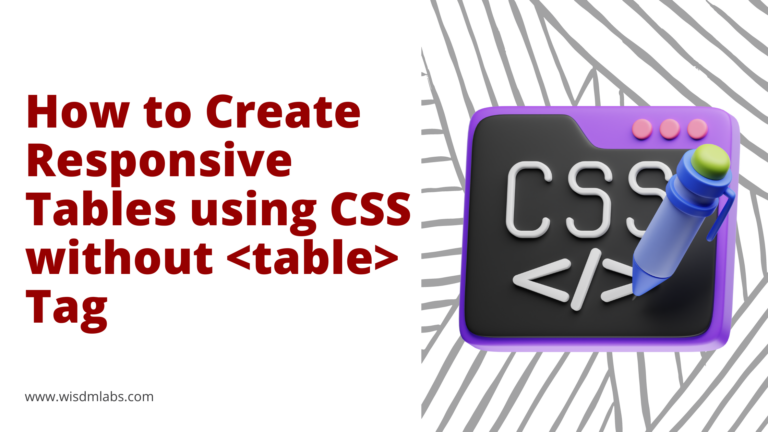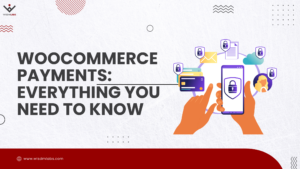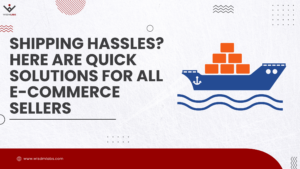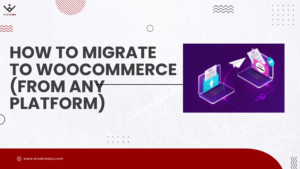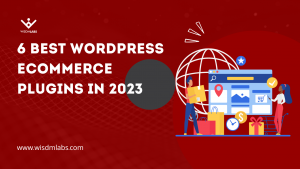 I read a saying the other day, “Smart people learn from their mistakes. But the real sharp ones learn from the mistakes of others.”
I read a saying the other day, “Smart people learn from their mistakes. But the real sharp ones learn from the mistakes of others.”
What’s even better, is the mistakes others have made yesterday, add to statistics for you today. 🙂 If you’re thinking of getting into e-commerce, you need to be geared up from day one. Here’s a list of mistakes you should be wary of.
[space]
#1 Choosing the Wrong Shopping Cart
Quite obvious isn’t it?! The biggest mistake you can make is choosing the wrong shopping cart. The shopping cart is the backbone of your e-commerce website. Choosing a shopping cart is like buying a house. You’ve got to get it right the first time around, and it has to suit your needs.
Think logically. Would you choose an apartment with 2 rooms for 30 people to live in? You’re bound to be caught in the middle of chaos, and conflict. Similarly the more the products you plan to sell, the more scalable your shopping cart should be.
It’s of course more than just about scalability. You need to evaluate the e-cart’s features and available extensions.
For example say you sell and ship quite a few products to France. It would be great if the shopping cart you choose is translation ready, to convert your product pages to French. It would also make sense to check available payment gateways and shipping add-ons specific to France.
Your requirements should drive the shopping cart you choose. Do not just go for the popular shopping cart, go for the one you need. At WisdmLabs, our favorite shopping cart is WooCommerce. But we chose Easy Digital Downloads as our shopping cart because it suited our requirements.
[space]
#2 Being okay with a Slow website
“every second of delay in the site’s load time reduces conversion rate by 7%. “
I can vouch for this.
A while ago, the WisdmLabs’ website was on a terrible theme, owing to which we had a high bounce rate and low traffic. We then shifted to Genesis, primarily because of this very reason. Today we see a growth of up to 20% of visitors every month.

On an e-commerce site, there are other factors which come into play as well. Like the shopping cart being slow, or the payment process taking a very long time. You should be aware that according to a study conducted by radware, “a 2-second delay in load time during a transaction results in abandonment rates of up to 87%. This is significantly higher than the average abandonment rate of 70%.”
Those numbers are huge. You want to make the process as smooth as possible for your shoppers.
There are several measures you can take to optimize page load time:
- It’s worth investing and creating a secure website on HTTPS to speed out the checkout process.
- You can use a Content Delivery Network (CDN), to reduce the download time of your content.
- You can also optimize the images you’ve added using simple techniques or by using a plugin. For example, we use Kraken.io to reduce the size of the images we upload. You could optionally use a WordPress plugin like Optimus.io.
[space]
#3 Confusing Visitors with a poor Navigation
Navigation is a map to your website. It gives customers a clear picture of what you have to offer and how they can get it. Store owners think that a good search option can replace navigation on their site. And this is not true.
UXMYTH tells you why– “It’s much easier and faster to click on a link than to enter a search term: you don’t have to spontaneously come up with the proper search expression, or worry about synonyms and spelling.”
Navigation guides a shopper. The shopper filters the needed product through a series of logical steps and is aware of his/her location on your website. You can also make use breadcrumbs to help shoppers navigate to a different location.
Of course by no means am I telling you to ignore a good search option. An intuitive search option, and with adequate filters can help increase customer engagement on your shop page. A faceted search option can narrow down product choices for shoppers, and help them find the most preferred product, thus increasing the chances of a sale.
[space]
#4 Ignoring SEO
Unless you’re the only one who sells out-of-this-world-one-of-a-kind products, I’m sure you don’t need to be concerned with SEO. Customers will find you. If not, you need to know search engine optimization.
SEO will ensure that your website is listed when a customer searches for a relevant keyword on search engines like Google or Bing. Research shows that 44% of online shoppers start by searching for the product using a search engine.
Chris has written a great article- The Ultimate Guide to SEO for E-commerce Websites on Kissmetrics, to guide you with SEO. Here are few takeaways from it:
- Research Keywords: For each product you sell, spend time researching the ‘long-tail’ keyword- a keyword which is not as common, but describes your product aptly. Use this keyword logically in content you write, like a blog, to redirect an interested visitor to your products.
- Optimize Product Pages: Write descriptive content on your product pages. Not irrelevant content, but content that describes your products the best way possible for shoppers. Use keyword friendly URLs or pretty permalinks as well.
- Add Rich snippets: Rich snippets help search engines, like Google, display additional information in their search results, like customer reviews, author details, product ratings and so on. Since this information helps visitors filter results sooner, search engines prefer rich snippets, which in turn helps increase your page’s ranking.
- Remove Errors: Search engines penalize websites which hamper user experience. Thus make sure you fix any errors on your website like broken links, duplicate content or titles, by redirecting erroneous links, and using canonical tags as needed.

[space]
#5 Using a Lengthy Checkout Process
Do you know 20% of your shoppers will abandon their cart if the checkout process is lengthy? If you’re worried your checkout process is too lengthy you need to read Fundamental Guidelines Of E-Commerce Checkout Design, to improve it. Christian talks about creating a linear checkout process, with descriptive fields, and user-friendly options to speed up checkout.
If your products allow for it, you can opt for a ‘one-click checkout’ to simplify the checkout process as well.
Asking shoppers to register is another hindrance to the checkout process and results in 30% cart abandonment. Ensure that you provide a “Guest Checkout” option, to increase conversions.
[space]
#6 Making it Difficult for Customers to Contact You
Customers like to be guided. Not in a pushy-salesman kind of way. But a I’m-happy-to-help-you-if-you-need-it kind of way. Customers like the fact that they can always ask you for help when needed.
Not having options for a customer to contact you, affects your conversion rate. This very reason has triggered an abundance in contact forms, inquiry forms and live chat options, on e-commerce websites.
Think about it. A customer might have an inquiry about out-of-stock products, or might want to ask for a discount on bulk purchase. If this customer does not find a way to contact you, that’s as good as a lost sale. This does not mean you go out of your way and add each contact functionality available.
I’m not telling you to do that.
I’m telling you to add a non-intrusive, easily accessible, per product inquiry functionality to allow you the opportunity to service customer requests and convert sales. For example WooCommerce store owners could use the Product Enquiry Pro plugin, or Jigoshop owners could use the Product Enquiry Form plugin.
[space]
#7 Ignoring Abandoned Carts
You have the stats. Shoppers abandon carts if your site is slow, if the checkout process is lengthy, if they’re asked to register, or if they can’t ask you a question.
“The typical shopping cart abandonment rate for online retailers varies between 60% and 80%, with an average of 67.91%”
Retargeting can recover up to 20% of your customers. The retargeting process does not have to begin on cart abandonment. In fact it has to begin as soons as a shopper lands on your site. Having an error free, easy to navigate website, and displaying related products when a shopper is browsing, are all efforts directed towards reducing cart abandonment.
For some shoppers, cart abandonment is part of the buying cycle. They are never interested in purchasing the product. But with others, you have an option to recover the sale.
Research has shown that an email sent (with information about abandoned products such as reviews, FAQs, etc), within 24 hours of cart abandonment sees an open rate of nearly 50% and a click through rate of nearly 30%.
Apart from email marketing, other methods of re-targeting include offering a time-based discount or a ‘Free Shipping’ option. Or rolling out loyalty programs upon checkout.
[space]
Your Thoughts?
I’m sure I haven’t covered every mistake e-commerce store owners can make. The points I’ve stated have a great deal of impact on your conversions, and thus are important to be dealt with.
Now over to you.
What are your thoughts on the biggest mistake e-commerce store owners can make. And how can they be avoided. Be sure to leave your thoughts and comments for the benefit of fellow readers!


